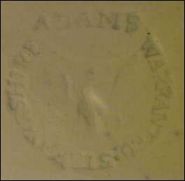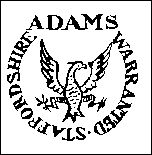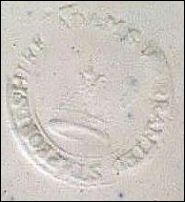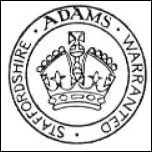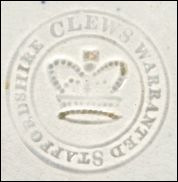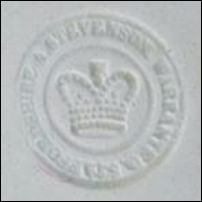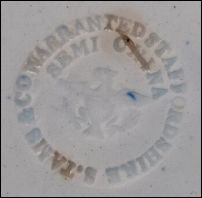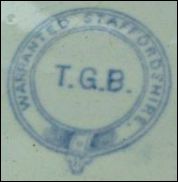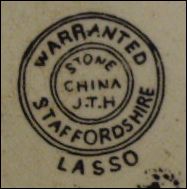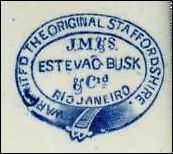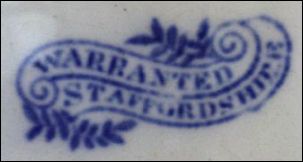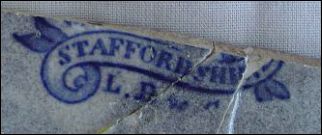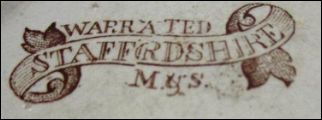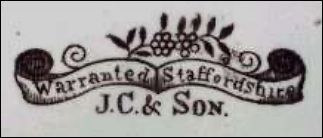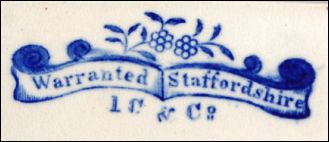|
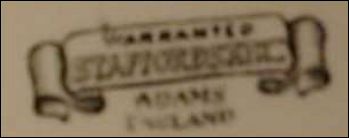
ADAMS
ENGLAND
|
William
Adams
Marks
incorporating 'ENGLAND' are 1891 onwards |
|
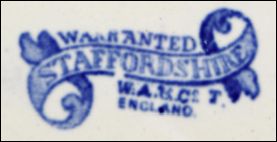
W
A & Co T
ENGLAND
|
William
Adams
William
Adams & Co
The
letter 'T' stands for Tunstall which is the town where the Adams
factories were located. The
use of 'T' or 'TUNSTALL' indicates a date post 1896 and the use of
"& Co' indicates a date prior to 1925.
|
|
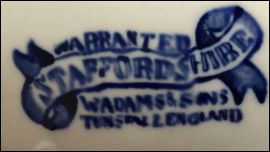
W
ADAMS & Sons
Tunstall England
|
William
Adams
William
Adams & Sons
Tunstall
which is the town where the Adams factories were located. The use of
"& Sons' indicates a date post 1925.
|
|
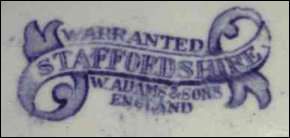
W
ADAMS & Sons
ENGLAND
|
William
Adams The
use of '& Sons' indicates a date 1925 onwards.
|
|
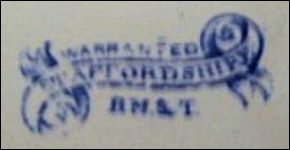
B
M T
|
Boulton,
Machin & Tennant (1889-1899) |
|
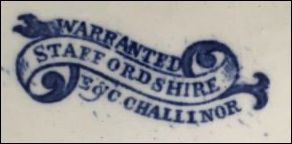
E
& C CHALLINOR
|
Edward
& Charles Challinor (1862-91) |
|
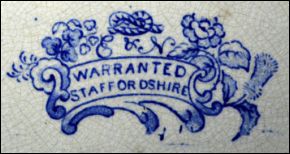
E
& N
|
Elkin & Newbon
(1844-55) The
initials 'E & N' are generally in script form |
|
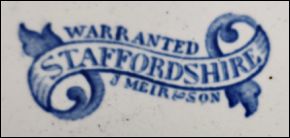
J
MEIR & SON
|
John
Meir & Son (1837-97) |
|
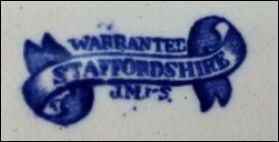
J
M & S
|
John
Meir & Son (1837-97)
|
|
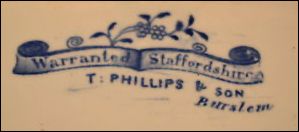
T
PHILIPS & SON
Burslem
|
Thomas
Phillips & Son (c.1845-6) Short lived
manufacturer - this more unusual mark was copied by John
Carr (& Co) (& Son) of North Shields
Northumberland
|
|
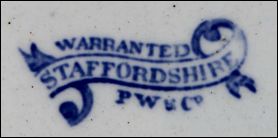
P
W & Co
|
Podmore,
Walker & Co (1834-56) In
1856 Enoch Wedgwood joined the company which became Podmore, Walker,
Wedgwood & Co. In
1860, after the death of Thomas Podmore, the business became Wedgwood
& Co. |
|
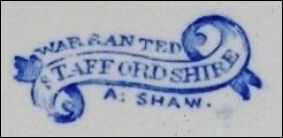
A
SHAW
|
Anthony
Shaw (1851-1882)
"& Son" from
1882-98
"& Co" from 1898-1900 |
|
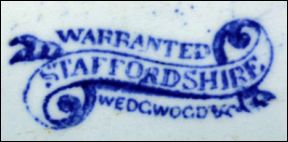
WEDGWOOD
& Co
|
Wedgwood
& Co (Ltd) (1860-1965) Successor
company to Podmore, Walker & Co |
